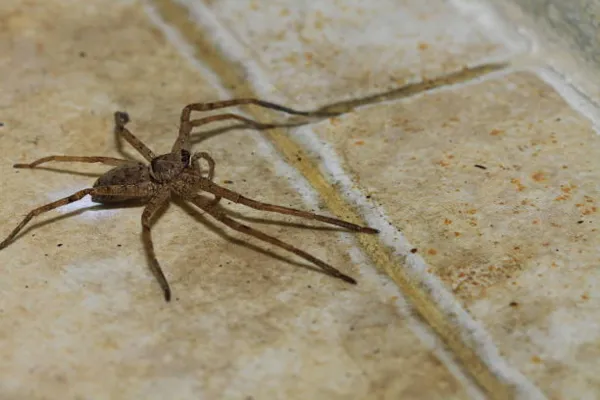
BLOGS
BLOG

Managing Spider Populations: Finding Harmony in Pest Control
Spiders: those eight-legged marvels that silently patrol our homes, keeping insect populations in check. While their role as natural pest controllers is appreciated, it's also understandable that not everyone wants them setting up shop in every nook and cranny. If you're among those who prefer to strike a balance between benefiting from spiders' services and keeping their numbers under control, here are some practical tips to help you manage spider populations indoors without squashing their ecological importance.
Understanding Spiders in Your Space
Spiders are fascinating creatures with a knack for finding the perfect spots to set up their webs. These webs aren't just for decoration; they're strategic traps laid in areas where insects are likely to pass through. Understanding where spiders tend to build their webs can help you target your efforts in managing their populations effectively. For instance, common indoor spider species like cellar spiders (daddy long-legs) prefer dark, damp corners, while orb-weaver spiders might be found outside near light sources attracting insects.
Why Manage Spider Populations?
While spiders are beneficial in keeping insect populations under control, there are valid reasons for wanting to reduce their numbers indoors. Some people experience fear or discomfort around spiders, known as arachnophobia. For others, maintaining a tidy and spider-free home is simply a matter of personal preference and cleanliness standards. Moreover, excessive spider webs can accumulate dust and debris, which may exacerbate allergies or create a less appealing living environment.
Practical Strategies for Spider Control
1. Regular Cleaning:
Regular vacuuming and dusting are essential for managing spider populations indoors. Pay close attention to corners, ceilings, and behind furniture where spiders often hide and build their webs. Removing webs and egg sacs promptly reduces the likelihood of spiders establishing themselves in your home.
2. Seal Entry Points:
Spiders can enter homes through tiny cracks and gaps around windows, doors, vents, and pipes. Seal these entry points with silicone caulk or weather stripping to prevent spiders from gaining access. This not only helps in spider control but also improves energy efficiency by sealing air leaks.
3. Reduce Insect Prey:
Spiders follow their prey, so reducing the availability of insects like flies, ants, and mosquitoes can indirectly help in controlling spider populations. Keep kitchen counters clean, store food in tightly sealed containers, and promptly dispose of garbage to eliminate potential food sources for both spiders and insects.
4. Natural Deterrents:
If you prefer natural methods, consider using essential oils known to repel spiders. Peppermint oil, tea tree oil, and citrus oils are popular choices. Mix a few drops with water in a spray bottle and apply around windows, doors, and other entry points. These oils not only deter spiders but also leave a pleasant scent in your home.
5. Lighting Considerations:
Outdoor lighting attracts insects, which in turn attract spiders seeking food. Consider using yellow or sodium vapor lights outdoors, as these are less attractive to insects compared to standard white lights. This simple adjustment can help reduce spider activity near your home.
6. Environmental Modifications:
Evaluate your indoor environment for factors that might attract spiders. Reduce clutter in storage areas, minimize cardboard boxes (which spiders can hide in), and maintain proper ventilation to reduce humidity levels, as some spiders prefer damp environments.
7. Beneficial Spiders:
Not all spiders found indoors are harmful or unwanted. Some, like cellar spiders, are harmless and contribute to pest control. Consider tolerating these spiders if they're not causing issues, as they may help in keeping other pest populations in check.
8. Monitoring and Prevention:
Regularly inspect your home for signs of spider activity, such as webs, egg sacs, or actual spiders. Early detection allows for prompt action before spider populations become established. Implement preventive measures consistently to maintain a spider-free environment.
Promoting Outdoor Pest Control:
Beyond managing spiders indoors, enhancing pest control measures outdoors can also reduce their indoor presence. Services like Valley Wide Pest Control specialize in creating tailored solutions to keep pests at bay. They can help with treating outdoor areas around your home, ensuring that potential habitats for spiders are minimized. By trimming vegetation, clearing debris, and sealing outdoor cracks and gaps with their expertise, you can effectively reduce the likelihood of spiders entering your home. Additionally, Valley Wide Pest Control offers eco-friendly options, such as organic pest control methods and plant-based repellents, which are safe for both your family and the environment. This proactive approach not only promotes a healthier living environment but also contributes to a more sustainable pest management strategy. By addressing both indoor and outdoor factors influencing spider populations, you can achieve comprehensive pest control and enjoy a more peaceful coexistence with these beneficial yet occasionally unwelcome houseguests.
Finding Your Balance
Managing spider populations indoors involves finding a balance that suits your comfort level and environmental preferences. While spiders play a valuable role in nature, it's understandable to want to limit their presence in your living spaces. By combining regular cleaning habits, strategic sealing of entry points, reducing insect prey, and considering natural deterrents, you can effectively manage spider populations while promoting a healthier and more comfortable home environment.
Remember, the goal is not eradication but rather moderation and coexistence with these beneficial yet sometimes unwelcome houseguests. By adopting these practical strategies, you can create a living space that is both inviting for you and less hospitable for spiders, ensuring a harmonious balance in your indoor ecosystem.
So, next time you spot a web in the corner, remember it's not just a nuisance—it's a reminder of nature's intricate balance. Embrace it with a few cleaning habits and preventive measures, and you'll enjoy a spider-friendly home that suits both you and these beneficial arachnids.
© 2024 Valley Wide Pest Control. All rights reserved.

